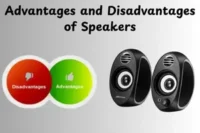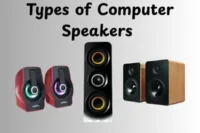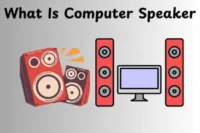Types of Microphone: A Complete Beginner’s Guide
Published: 10 Oct 2025
Microphones may look simple, but they come in many different types, each designed for a special purpose. From recording music to chatting on a computer, the right microphone makes a big difference. Knowing the types of microphone helps you choose the one that fits your needs best, whether it’s for work, study, or fun.
Main Types of Microphones
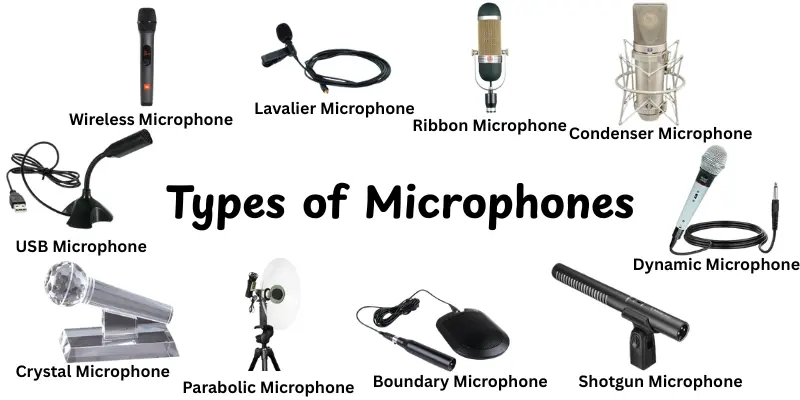
Microphones are not all the same. They come in many forms, each made for different uses. Knowing the types of microphone helps you pick the right one for your purpose.
- Dynamic Microphone
- Condenser Microphone
- Ribbon Microphone
- Lavalier Microphone
- Shotgun Microphone
- USB Microphone
- Wireless Microphone
- Boundary Microphone
- Parabolic Microphone
- Crystal Microphone
Dynamic Microphones
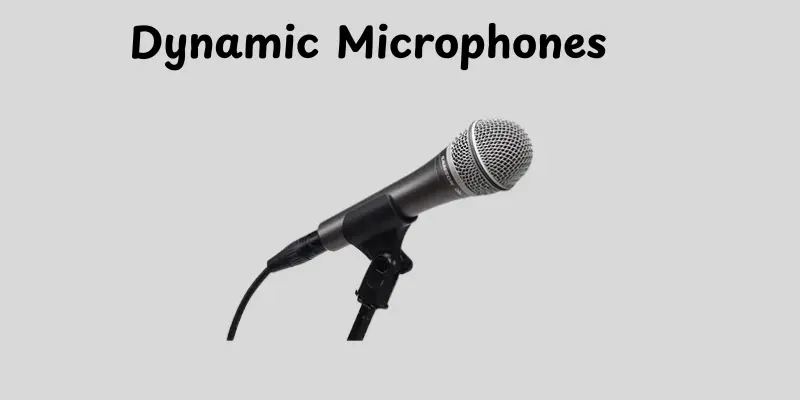
Dynamic microphones are one of the most popular types because they are strong, simple, and reliable. They can handle loud sounds easily and are often used in live shows, recording, and broadcasting. Beginners love them for their durability and ease of use.
Uses
- Live performances and concerts
- Public speaking and events
- Broadcasting (radio and podcasts)
- Recording loud instruments like drums and guitars
- Outdoor events and field recording
Condenser Microphone
Condenser microphones are known for their clear and detailed sound quality. They are more sensitive than dynamic microphones, which makes them perfect for studio recordings and professional use. Many singers, podcasters, and content creators prefer them for capturing rich and natural audio.
Uses
- Studio vocal recordings
- Podcasting and voiceovers
- Online meetings and streaming
- Recording musical instruments like piano or acoustic guitar
- Film, TV, and professional broadcasting
Ribbon Microphone
Ribbon microphones are loved for their warm and natural sound quality. They use a thin ribbon of metal to capture sound, making them perfect for smooth and detailed audio. Many professionals choose them for music and broadcasting because of their unique sound character.
Uses
- Recording vocals in studios
- Capturing acoustic instruments (like guitar or violin)
- Broadcasting for radio and TV
- Recording orchestras or live performances
- Adding vintage sound effects in music production
Lavalier Microphone
Lavalier microphones, also called lapel or clip-on mics, are small and lightweight. They can be clipped to clothing, making them ideal for hands-free use. These mics are widely used in presentations, interviews, and TV shows where freedom of movement is important.
Uses
- Presentations and public speaking
- TV shows, news, and broadcasting
- Interviews and talk shows
- Theater and stage performances
- Online teaching and video tutorials
Shotgun Microphone
Shotgun microphones are long, narrow mics designed to capture sound from one direction while rejecting background noise. They are often used in film, TV, and outdoor recording where focus on a single sound source is needed.
Uses
- Film and TV production
- Outdoor interviews and documentaries
- Sports commentary and live events
- Nature and wildlife recording
- YouTube videos and vlogging
USB Microphone
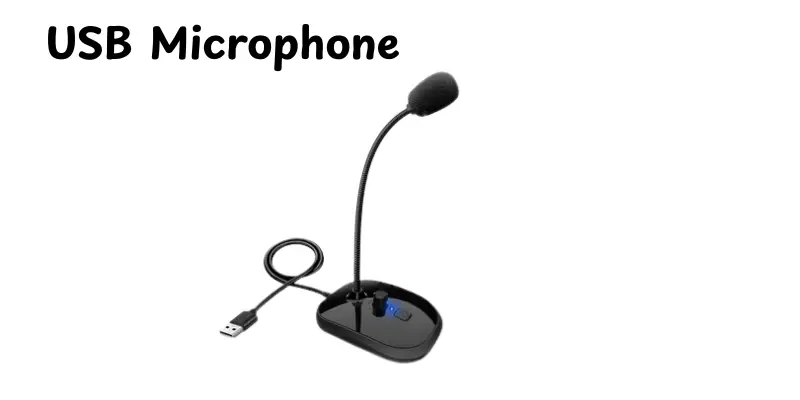
USB microphones are plug-and-play devices that connect directly to your computer using a USB port. They are very popular for beginners, content creators, and anyone who wants easy recording without extra equipment.
Uses
- Podcasting and voiceovers
- Online meetings and video calls
- Gaming and live streaming
- YouTube and content creation
- Online learning and teaching
Wireless Microphone
Wireless microphones are cordless audio devices that let you speak or perform without being tied to cables. They’re widely used for stage performances, events, and situations where freedom of movement is important.
Uses
- Stage performances and concerts
- Public speaking and presentations
- Interviews and broadcasting
- Fitness classes and events
- Video production and filming
Boundary Microphone
A boundary microphone is designed to be placed on flat surfaces like tables, floors, or walls. It captures sound from a wide area, making it popular for meetings, theaters, and stage recordings where multiple voices or sounds need to be picked up.
Uses
- Conference rooms and board meetings
- Stage performances and theater recording
- Courtrooms and official gatherings
- Lecture halls and classrooms
- Ambient sound recording in studios
Parabolic Microphone
A parabolic microphone uses a special dish-shaped reflector to capture sound from far distances. It’s known for long-range listening and is often used in outdoor settings where regular microphones can’t reach clearly.
Uses
- Wildlife recording and bird watching
- Sports broadcasting to capture field sounds
- Surveillance and security purposes
- Outdoor research and nature studies
- Emergency or rescue operations for distant sounds
Crystal Microphone
A crystal microphone uses special piezoelectric crystals to convert sound vibrations into electrical signals. These microphones were once very popular for radios, telephones, and early recording devices, known for their simple design and affordability.
Uses
- Early radios and communication systems
- Vintage telephones and intercoms
- Amateur sound recording setups
- Teaching and demonstration tools
- Collectible and retro audio equipment
Choosing the Right Microphone for You
The USB microphone truly stands out as the best type of microphone in a computer. It’s easy to use, delivers clear and professional sound, and connects instantly without any complicated setup. Personally, I recommend it because it works perfectly for everyday needs like online meetings, gaming, or even recording podcasts—simple, reliable, and effective.
Conclusion
The types of computer microphones include dynamic, condenser, ribbon, USB, wireless, lavalier, shotgun, boundary, parabolic, and crystal microphones, each designed for specific uses. Some are best for clear studio recording, while others work well for meetings, gaming, or outdoor sound capture. Knowing these types is important because it helps you choose the right microphone that matches your needs, ensuring better sound quality, smoother communication, and an overall improved experience.
FAQs
No, microphones are not all the same. Different types like dynamic, condenser, or USB mics are designed for different purposes. That’s why one microphone may sound better for singing while another works better for video calls.
Not always. Some USB microphones use condenser technology, but not all of them. A USB mic simply means it connects directly to your computer through a USB port.
Technically, yes, but the quality may not be the best. For example, a dynamic mic can record vocals, but a condenser mic will capture more detail. Choosing the right type gives you better results for each task.
Each type is made for specific needs like recording music, speaking, or outdoor use. For example, lavalier mics are small and clip to clothes, while shotgun mics focus on sound from one direction. This variety ensures clearer and more accurate sound capture.
Not always. Wireless microphones give you more freedom to move, but they can face signal issues. Wired mics are more stable and reliable for studio or home use.
Not necessarily. Expensive mics often give higher quality sound, but many affordable microphones can work perfectly for beginners. It’s more about matching the mic type to your needs than just the price.
Built-in microphones are convenient but usually have lower sound quality. External microphones like USB or condenser types give much clearer audio. If you do a lot of meetings or recording, an external mic is a better choice.
A dynamic microphone is tough and works well for loud sounds, while a condenser mic is sensitive and captures small details. Think of dynamic mics for live shows and condenser mics for studios. Both are useful, but in different situations.
Yes, but the quality won’t be the same. Headset mics are made for convenience in games and calls, not for professional recording. A studio mic, like a condenser or USB type, captures much clearer and richer sound.

- Be Respectful
- Stay Relevant
- Stay Positive
- True Feedback
- Encourage Discussion
- Avoid Spamming
- No Fake News
- Don't Copy-Paste
- No Personal Attacks

- Be Respectful
- Stay Relevant
- Stay Positive
- True Feedback
- Encourage Discussion
- Avoid Spamming
- No Fake News
- Don't Copy-Paste
- No Personal Attacks


